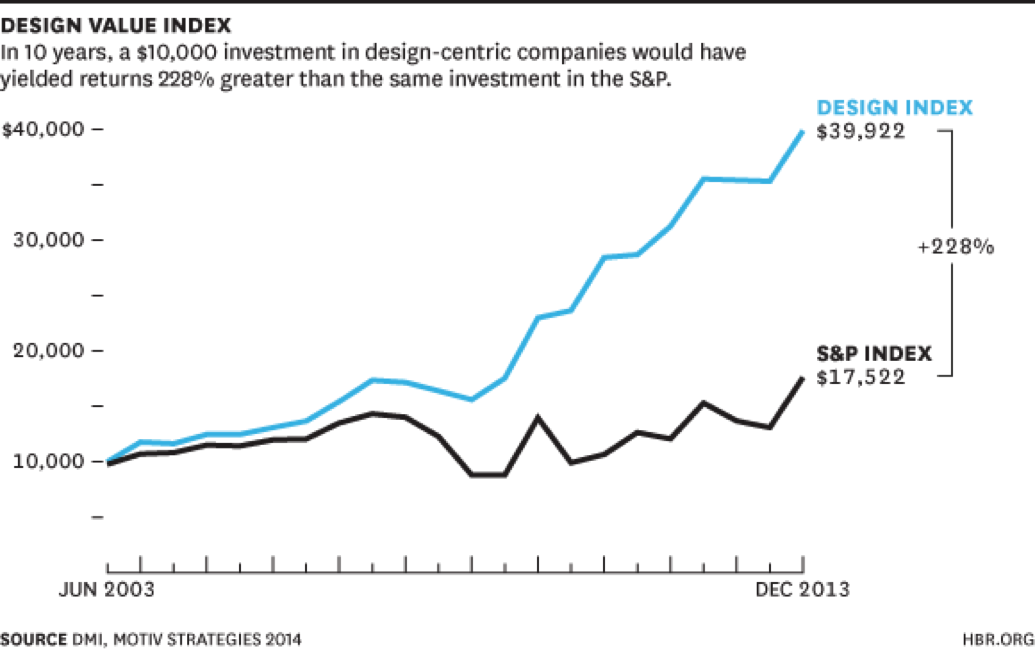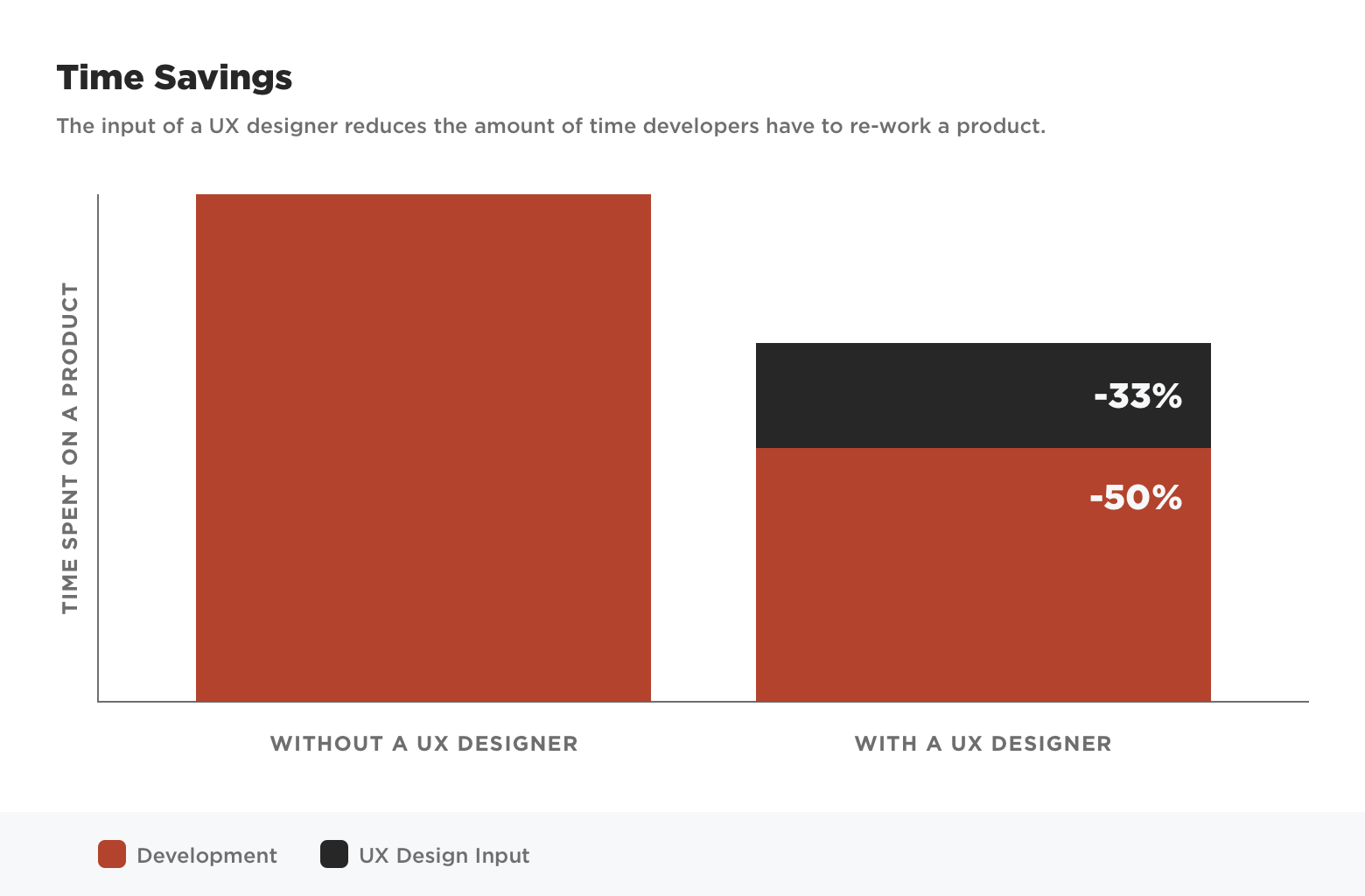The True Value of UX Maturity

Return on Investment (ROI) has become popular shorthand to justify almost anything a business does. Leaders ask, “What’s the ROI on that?” Sales pitches talk about a high ROI on a particular product or service.
The problem with this approach is that it ends up being more focused on cost than value. It's easy to know how much you’ve lost but it can be much harder to know how much you’ve gained.
Price is what you pay. Value is what you get. - Warren Buffett
We don’t claim to have a magic bullet that will prove the ROI of UX. What we do have are some fundamental concepts that have proven time and again, that to get real value, you have to invest in developing UX maturity.
User-Centered Design Has Inherent Value
Focus on customer experience can generate a 20-30% increase in customer satisfaction and economic gains of 20-50%. - McKinsey & Company, “What matters in customer-experience transformations,” July 2019
What most business leaders want to hear when they talk about ROI is the assurance that if they invest a specific dollar amount they’ll get a specific return. In the face of challenges to market growth, user retention, or fierce direct competition, they want confidence that what they're trying will work.
For some organizations, user experience can be difficult to measure on its own, and it can be even more complicated to tie directly to specific business metrics. Our clients measure UX maturity in a product from a quantitative and qualitative perspective with our Ladder tool. With or without that lack of specificity, however, it does not mean it’s not worth the real investment that user-centered design requires.
Research has demonstrated there’s little doubt that focusing on customer experience and cultivating user-centric design practices can have a real impact on your bottom line.
In fact, The Design Management Institute found in 2014 that the most innovative companies that make user-centric design a priority outperform the S&P by 228% over 10 years.

*Design Management Institute. "Design-driven Companies Outperform S&P By 228% Over Ten Years - The DMI Design Value Index." (2014)
In short, prioritizing the needs of customers and users doesn’t just feel good, it creates a real impact on your business. There is almost always value in making things easier for people. Sometimes that’s the very thing that helps a business beat the competition.
Whether they need to more easily buy your product, manage their account, or navigate a complex process, you can almost never go wrong investing in “ease of use.”
When people feel it’s easy to do business with you, they’ll be more likely to try your product or service in the first place and less likely to abandon your product for a competitor.
Whether you like it or not, if your customers don’t feel your product or service is intuitive or easy to use, you’re cutting into your profit potential.
To Unlock ROI, Focus on Increasing UX Maturity
We like to use a simple model to help organizations determine how well they’re addressing user and customer needs. Our UX Success Ladder is not so much a measuring tool as a roadmap to UX maturity.

If you’re delivering a Functional experience, you’re likely letting engineering drive your decisions.
When you get to Usable, you might be using piecemeal UX solutions based on hunches about user needs.
At the Comfortable level of the ladder, you’ve installed some UX leadership or partnered with an experienced team like Drawbackwards.
But to get to Meaningful and Delightful you’ll need commitment and savvy. These upper rungs of the ladder are reachable with a seasoned team and C-suite leaders who understand the value of UX and have been through enough experiences to know what works.
The ladder is not just a roadmap to maturity, but also to revenue. In today’s world, if you’re stuck at the bottom Functional rung of the ladder, you’re lagging behind and losing ground to current and future competitors.
It will take a significant commitment and investment to change your mindset and culture to reach Usable or Comfortable. But the cost of that investment, when done right, can be recovered within the first year through fewer customer support requests, less rounds of development rework, and a more reliable and better all-around product.
Once your culture is established and you gain momentum, each rung on the ladder becomes more accessible with a fraction of additional investment leading to exponential returns. We saved one client $10 million in annual expenses by helping them reach Comfortable on the ladder. Another client reached Comfortable with Drawbackwards, which led to five new $1 million accounts within six months.
We helped yet another long-term client reach Meaningful on the success ladder and its $5 million investment in user-centric practices and design have helped it grow revenue 10-20% year over year to over $100 million annually as a SaaS market leader in their category.
The old adage is true - it takes money to make money. An investment in your UX maturity is an investment in your future and it’s likely to return much more than you might think.
UX Maturity Doesn’t Happen Overnight
The question then is how to make smart investments to efficiently extract all that value. In other words, what is the price you’re willing to pay for a more mature UX organization? UX maturity is not something you can go out and buy off the shelf. It needs to be cultivated and developed over time and through experience.
You basically have two options: build it from the ground up or get the help of a highly-skilled UX team like Drawbackwards.
Many businesses will see UI/UX roles within their organization and think that all is well. But UX titles don’t always translate to UX maturity. There can be a tendency to overinvest in software engineering and development. What is often overlooked is how an investment in highly-skilled UX designers and leaders can improve the velocity and efficiency of developers.

*Experience Dynamics - Making Strong Business Case ROI UX Infographic
UX maturity allows a team to more effectively match business requirements with user needs to create an easier interface for users. When interfaces are designed correctly the first time, developers spend less time cycling and building features without a clear view to how it impacts users.
The simple fact is that you need to start building UX maturity now. A partner like Drawbackwards can give you the expertise that you need right away as you build your own capabilities. We can even help you find, hire, and train your team and be the trusted partner to audit their performance as you evolve over time.
Don’t Leave Money on the Table
There’s no way around it. If you’re not investing in your user experience, you’re missing out on potential profit and cost savings. We can help.
Our blended UX team has nearly 100 years of combined experience across design, strategy, research and copywriting. We know how to help you move up the UX Success Ladder and we can do it faster and at less cost than it would take you to build a seasoned team and do it on your own.
Plus, if you want we’ll stick around to help you build your own capabilities so you won’t need us anymore. It’s a partnership that can lead to exponential ROI. Let’s talk about how we can set you on the right path forward.